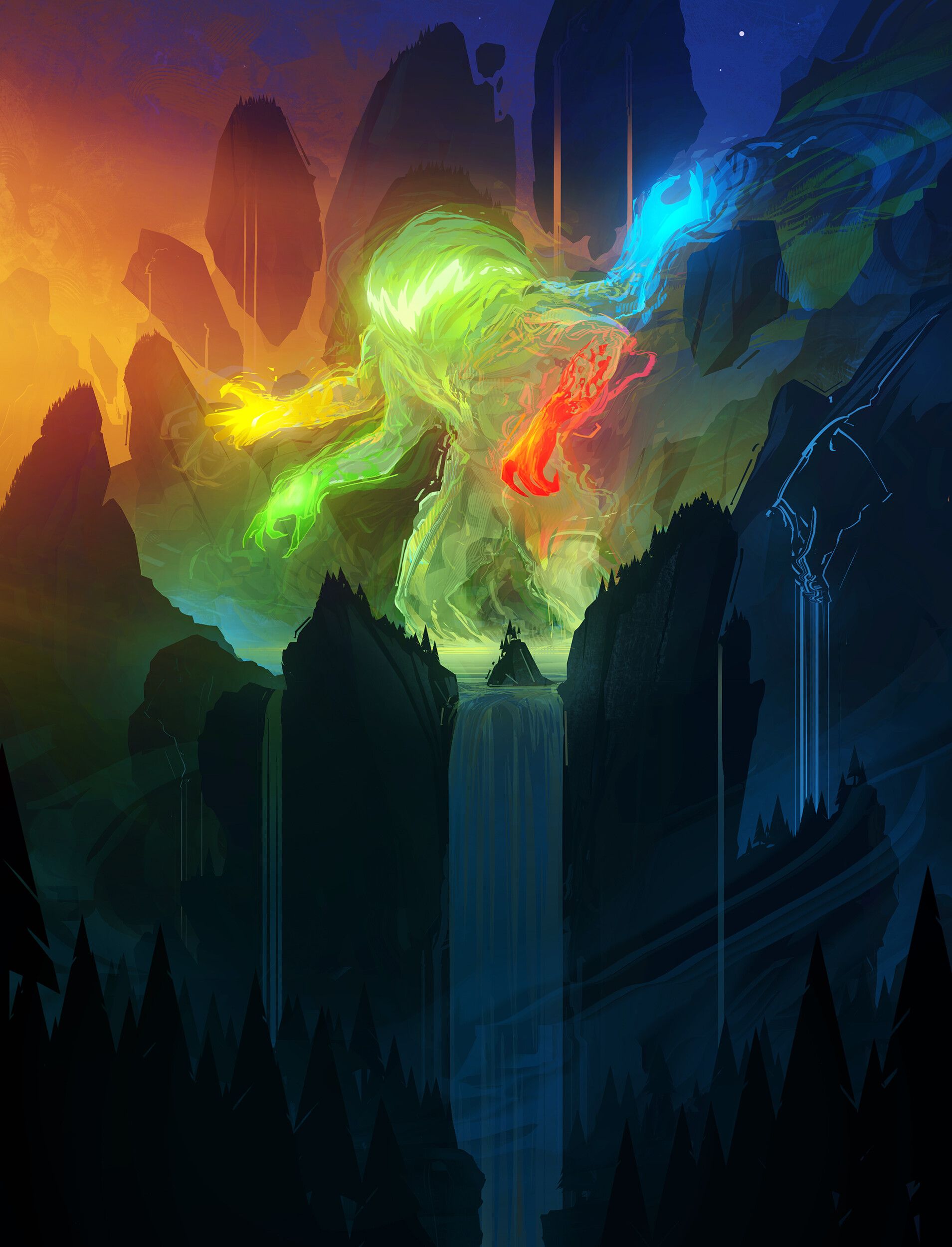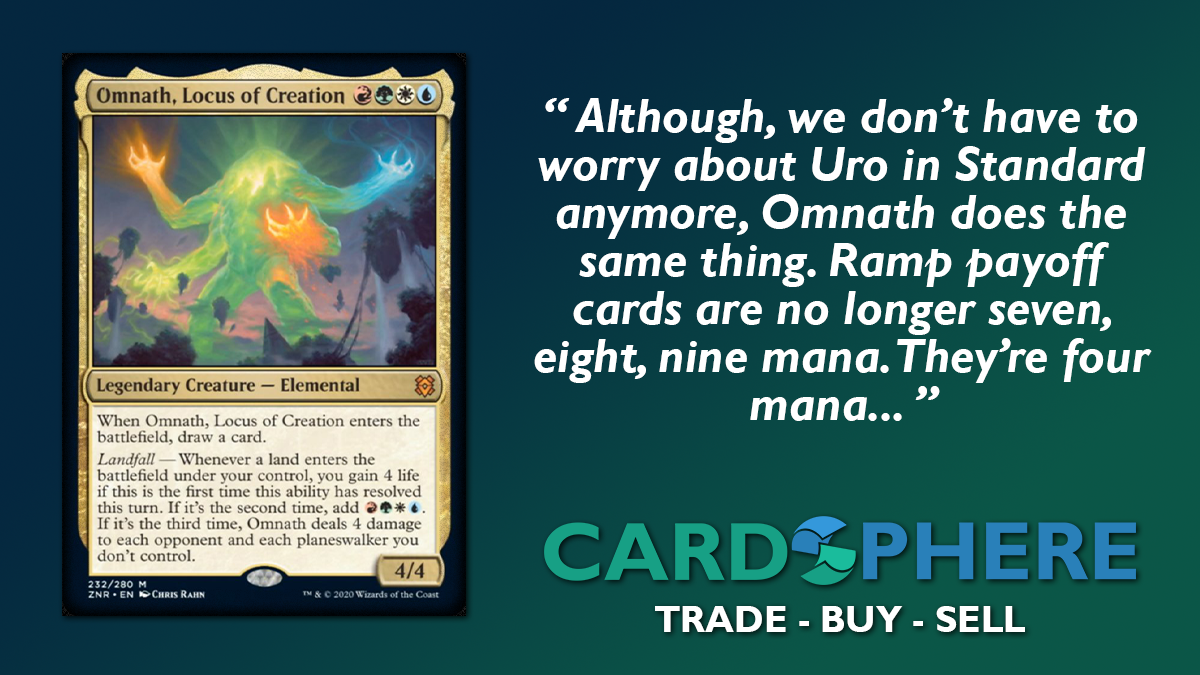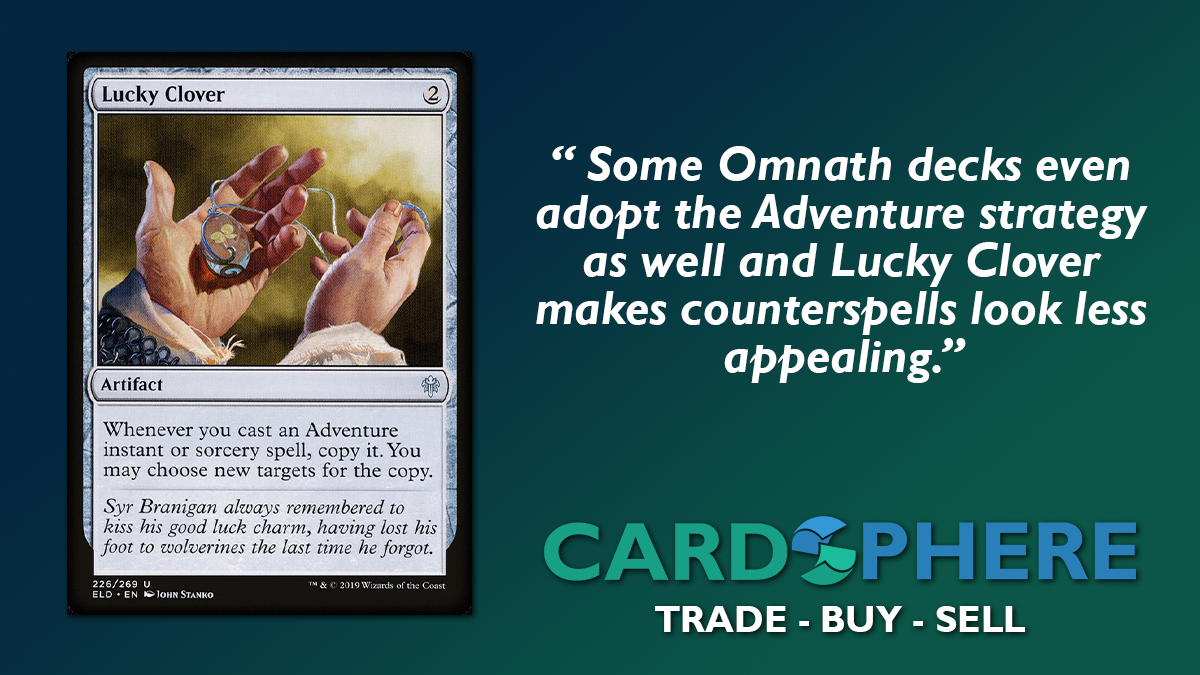It's an Omnath World

First weekend of Standard tournaments is in the books and the long awaited Uro ban finally happened. I was hoping that this article would be about which aggro shells I think are promising in the new Standard format, but instead I’m here to tell you there are none. The only viable archetype in standard revolves around Omnath, Locus of Creation, Lotus Cobra, and a whole lot of mana.
3 Beanstalk Giant
1 Branchloft Pathway
2 Cragcrown Pathway
4 Escape to the Wilds
2 Evolving Wilds
4 Fabled Passage
4 Forest
3 Genesis Ultimatum
4 Island
1 Kenrith, the Returned King
2 Ketria Triome
4 Lotus Cobra
1 Mountain
3 Mystical Dispute
4 Omnath, Locus of Creation
1 Plains
4 Raugrin Triome
3 Riverglide Pathway
2 Spikefield Hazard
1 Temple of Plenty
1 Terror of the Peaks
2 Thundering Rebuke
4 Cultivate
3 Negate
2 Storm's Wrath
2 Mazemind Tome
2 Felidar Retreat
2 Bonecrusher Giant // Stomp
1 Wilt
1 Radha, Heart of Keld
1 Giant Killer // Chop Down
1 Elder Gargaroth
The part of the Ban & Restricted announcement that stuck out to me today was the reason for not banning more out of the infamous Omnath deck. Wizards (of the Coast) stated in the announcement “Our goal is to bring these decks down to a level where they are still appealing and competitive, but where natural metagame forces are enough to keep them in check. In general, we prefer this approach to overshooting the mark and removing an archetype from viability.” Which would be an understandable concern if I didn’t have the spicy hot take that the ramp decks existing keeps other archetypes from being playable.
Historically, the best way for aggressive strategies to beat ramp decks was to get underneath them and beat them before the payoff cards hit the battlefield. While ramp spends the first few turns developing their mana, aggressive decks accumulate card advantage by getting in chips of damage with almost no interaction. In the post-board games, ramp needs to bring in removal and other roadblocks cheaper than their usual payoffs to stabilize and try to turn the games around.
Uro changed this dynamic. Uro, Titan of Nature’s Wrath was an extremely efficient roadblock against aggressive strategies. Life gain essentially negates a whole turn of damage, along with continuing to advance the board. Although, we don’t have to worry about Uro in Standard anymore, Omnath does the same thing. Ramp payoff cards are no longer seven, eight, nine mana. They’re four mana and they’re coming down earlier than turn four thanks to cards like Lotus Cobra. Aggressive decks can’t get a relevant enough damage through during the early turns and can’t compete with the sheer amount of card advantage these Omnath decks produce.

Aggro isn’t the only archetype pushed out by these ramp decks; control is also suffering. It’s so easy to say just counter Omnath or destroy the Lotus Cobra, but it’s a little more complicated than that. There are many cards that need to be answered in the Omnath decks. Lotus Cobra needs to be killed on exactly turn 2, otherwise Omnath threatens to make an appearance on turn 3. Having two answers and the available mana on turn 3 is a big ask of control decks in standard and the Omnath player has likely already gotten value out of their spells before they’re answeRed.
Control really struggles against Omnath decks or even Adventure decks because the control player is not able to reliably make good trades throughout the game. It’s difficult to keep up with a deck that is essentially drawing 5 cards from Genesis Ultimatum or Escape to the Wilds. Some Omnath decks even adopt the Adventure strategy as well and Lucky Clover makes counterspells look less appealing.
Once upon a time, answers were better than threats and it often felt pointless to invest in creatures because they would be removed before the card could do anything. Now, even if a removal spell is available, Omnath replaces itself when it enters the battlefield and that player is still ahead on cards. Land for turn can’t be interacted with which makes it even harder to get a card like Omnath off the battlefield without falling behind anyway because the Landfall trigger still happens.

Printing efficient answers again won’t solve the problem of the difficulty of interacting with these efficient threats. Any good answer printed can easily be slotted into these decks with the threats, which makes the decks even more powerful and leads to further homogenization of the format. Anything a control deck can do, a ramp or midrange deck in Standard can do just as well – if not better. It doesn’t make sense in competitive play to play a deck if there’s a better version of it and so control is pushed out.
So ban something else out of the Omnath deck and everything will be fixed, right? In the last year, Standard bans have become the new normal. A powerful card takes over the format until it gets to the point where it has to be banned and then a new powerful card takes its place as the new best thing to do in Standard.
This happens more often in Standard than any other format because Standard has the smallest card pool. Older formats have no shortage in powerful cards and strategies which allows multiple decks to be good choices for tournaments. The more bans that happen in Standard, the more likely the format dissolves into a one or two deck format because the powerful cards left over are so much more better than the rest of the card pool, it would be incorrect not to play them.
Unfortunately, Standard can no longer survive without bans but bans continuously narrow the format even more. This is why this is the new normal for Standard and it might be a while before something other than midrange or ramp becomes a viable strategy. However, the ramp deck is currently so oppressive, that despite narrowing the card pool, the absence of it will allow more innovation in the format and give space for other archetypes to return.
